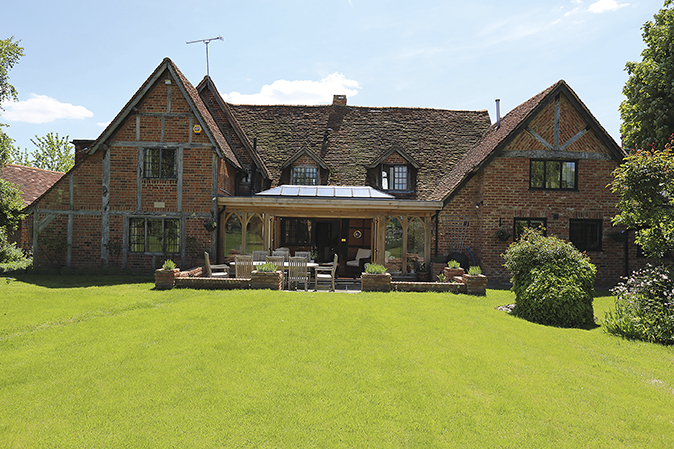Let there be light – conservatories, orangeries and garden rooms are sympathetic and practical ways to add extra space to a house, says Amelia Thorpe.
As we emerge from the dark days of winter, it’s time to start thinking about light – and how to make the most of it. The Victorians, ever the progressives, developed conservatories to hot-house their exotic plants and, over the years, we have interpreted their love of glass structures to create rooms that do more than allow plants to flourish.
Conservatory design has undergone, if not exactly a revolution, certainly a substantial change. Although conservatories of the 1980s became en vogue as bolt-ons to the rear or side of the house and for use as a sun room on warmer days, today, they’ve become fully integrated parts of our homes – spaces that often flow directly from our kitchens or sitting rooms as invitingly light-filled extensions.

Bespoke orangery, Hampton Conservatories (www.hamptonconservatories.co.uk; 020–3613 0510)
Driven by the need to overcome the ‘too cold in winter, too hot in summer’ complaint, conservatories can now have dramatically improved thermal ratings and better design, so that they can be enjoyed year-round.
Choice is the by-word. Developments in high-performance glazing, coupled with advances in manufacturing large sheets of glass, allow designers to create conservatories, orangeries, garden rooms and seemingly frameless ‘glass box’ structures in a host of styles to suit the architecture of your house and your individual taste, from classic Victorian and Edwardian-inspired options to ultra-contemporary models.

Bespoke oak-framed orangery, Prime Oak (www.primeoak.co.uk; 01384 296611)
Although the names are often used interchangeably, there is a difference between a conservatory, which is largely made of glass, including the roof, and an orangery, which has more brickwork and is a flat-roofed extension with large windows and roof light. A garden room has a solid roof and walls with generous windows.
A fully glazed structure will, of course, give the greatest sense of light and space, but some prefer a room with a smaller area of roof glazing or a solid, insulated roof and glazed sides. The choice is down to individual taste, although orangeries and garden rooms have become increasingly popular because they can make for a more versatile and thermally efficient room.
Other practical considerations include whether the room will be overlooked and the direction it’s oriented in – a north-facing conservatory will receive less direct sunlight than a south-facing one, for example.

Bespoke orangery, David Salisbury (01278 764444; www.davidsalisbury.com)
Conservatories can be made in a variety of materials, primarily timber and aluminium. There has also been a revival of interest in oak-framed structures, which can combine the rustic beauty of traditionally jointed and pegged timber frames with large areas of glass.
And what do they share? In the past, it might have been a single set of French doors, but now it can be several sets or increasingly large sliding and folding doors, which offer a sense of uninterrupted flow between interior and exterior. Throw open the doors in summer and, suddenly, you have a sense of space, as well as masses of natural light.
Bespoke orangery, David Salisbury (01278 764444; www.davidsalisbury.com)
Bespoke orangery, Hampton Conservatories (www.hamptonconservatories.co.uk; 020–3613 0510)
Bespoke oak-framed orangery, Prime Oak (www.primeoak.co.uk; 01384 296611)
Bespoke handmade conservatory, The Caulfield Company (0113–387 3118; www.caulfieldcompany.co.uk)

The Country Life Top 100 architects, interior designers, craftsmen, builders and garden designers in Britain
It's now six years since the original Country Life Top 100 was published, but the aim hasn't changed: we name

Britain’s great railway stations: Victorian eclecticism, modern genius and one that is a true work of art
Simon Jenkins lauds our most romantic and architecturally significant railway stations, some of the unsung triumphs of British conservation.

How to add an extension to your house
Adding extensions is a popular choice for those who need more space but don’t want to sell their house.




